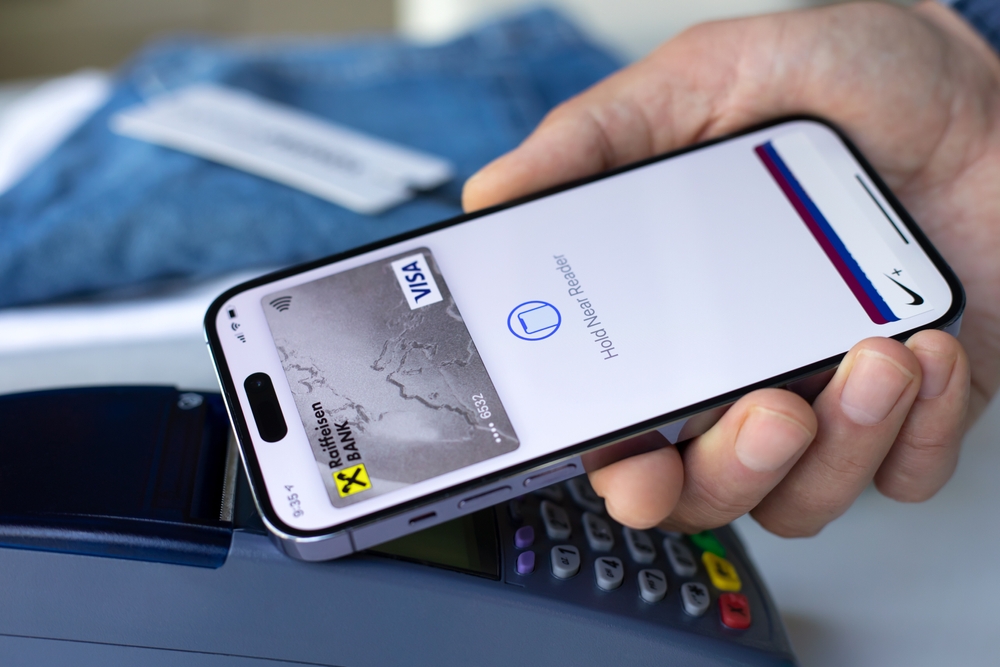In the world of personal finance, it’s often the grand gestures that receive all the attention—buying a new car, saving for a down payment on a house, or planning an extravagant vacation. But beneath the surface are the seemingly innocent indulgences that silently siphon away your hard-earned cash. These are the small, everyday choices that bring a momentary thrill or convenience, yet when compounded over time, they stealthily balloon into significant sums. This isn’t about vilifying little luxuries, but rather about shining a light on those expenses that, with a touch of awareness and moderation, could be reined in to bolster your financial health. Let’s explore these 13 subtle splurges that may be quietly working against your broader financial goals.
1. Coffee Shop Stops

The allure of a perfectly brewed cup of coffee from your favorite café is undeniable. It’s that moment of solace before a hectic workday or a warm companion during a meeting. However, what starts as an occasional treat can easily transform into a daily habit. According to a study by the National Coffee Association, the average coffee drinker spends around $2,000 annually on coffee outside their home. Just imagine redirecting those funds towards a long-term savings goal or paying down debt.
Of course, it’s not just about the money—it’s about the experience, the ambiance, and the social aspect. The barista knows your name, your order is ready before you even ask, and perhaps you even have a “usual” table. Cutting this indulgence completely might seem unthinkable, but even small adjustments can lead to significant savings. Perhaps limit your café visits to twice a week, or explore making gourmet coffee at home. The beauty of the occasional indulgence is that it stays special.
2. Subscription Services

In the age of digital convenience, subscription services have proliferated into every corner of our lives. From streaming platforms to monthly boxes of artisanal snacks, it seems there’s a subscription for everything. The problem arises when these services pile up, often forgotten, with monthly fees automatically deducted. Before you know it, what feels like minor expenses add up to hundreds, if not thousands, annually.
Take a moment to audit your subscriptions. Do you really need memberships to five different streaming services, or have a monthly delivery of products you barely use? It’s easy to overlook these charges, allowing them to quietly drain your bank account. The key is to identify which ones truly add value to your life. Canceling or even downsizing a few can free up funds for more meaningful uses.
3. Impulse Grocery Buys

Grocery stores are a playground for impulse buys, strategically designed to entice you with last-minute additions to your cart. It’s those fancy cheeses, exotic spices, and that irresistible bakery section that add unplanned items to your list. According to consumer psychologist Kit Yarrow, impulse buys at grocery stores can add an extra 20% to your grocery bill. Over a year, this extra cost can be enough to fund a small vacation.
Sticking to a shopping list is an effective way to combat this tendency. Planning your meals and snacks for the week not only aids your budget but also promotes healthier eating habits. It’s about retraining the mind to focus on what you truly need, rather than what simply catches your eye. The occasional treat is fine, but let it be a conscious decision rather than an impulsive one.
4. Dining Out

The pleasure of dining out is a multifaceted experience, from the anticipation of trying a new menu item to the joy of gathering with friends. Yet, it’s easy to overlook how quickly these outings accumulate into a hefty monthly sum. When dining out becomes a habitual rather than occasional activity, it can put a significant dent in your finances. Not to mention the additional costs of tips, tax, and transportation, which can further inflate the bill.
Instead of eliminating dining out altogether, consider setting a monthly budget. Embrace the art of cooking at home, which can be an equally rewarding and creative process. Hosting potlucks or making dinner gatherings a collective effort can maintain the social aspect without the financial burden. When you do choose to eat out, make it a deliberate and enjoyable occasion.
5. Premium Gym Memberships

Many people sign up for premium gym memberships with the best intentions, lured by amenities like state-of-the-art equipment, pools, and steam rooms. However, it’s not uncommon for enthusiasm to wane after the initial commitment, with visits becoming less frequent. According to a report by the International Health, Racquet & Sportsclub Association, roughly 67% of gym memberships go unused. It’s a luxury that, when not fully utilized, can be a drain on your finances.
Reassess what you truly need in a fitness routine. There are countless apps, online videos, and community classes that offer great workouts for a fraction of the cost. Parks and trails provide a free and refreshing alternative for your fitness activities. If the gym’s social environment is what you crave, trial a membership or opt for pay-per-visit plans. The goal is to match your fitness spending with your actual usage and enjoyment.
6. Daily Takeout Lunches

The convenience of grabbing lunch from a nearby deli or fast-food joint is often too tempting to resist. It saves time, requires no planning, and provides instant gratification after a long morning. However, the typical daily takeout lunch can set you back around $10 to $15, which can quickly add up to $2,500 to $3,500 a year. This is a significant sum that could be redirected towards an emergency fund or investing in personal development.
Packing lunch from home requires a bit of planning but pays off in savings and health benefits. Preparing meals in batches can save you time and allow for nutritious, balanced lunches. It’s an opportunity to get creative with leftovers or explore new recipes. Occasionally treating yourself to a lunch out is perfectly fine, but making it the exception rather than the norm can have a positive impact on both your wallet and well-being.
7. Sale Shopping Sprees

Sales can be a double-edged sword, offering seemingly incredible deals that are hard to pass up. In reality, these “savings” often lead to spending on items you don’t need or wouldn’t have bought otherwise. Consumer psychologist Philip Graves notes that sales often trigger a fear of missing out, compelling people to make unnecessary purchases. Accumulating sale items over the year can result in hundreds or thousands spent on things that eventually gather dust.
Approach sales with a plan and a list of items you genuinely need or have been contemplating for some time. This can help you avoid the pitfalls of impulsive shopping. Setting a budget for sales events ensures you don’t exceed your financial limits. Focus on quality rather than quantity, opting for timeless pieces that will serve you well in the long run. Remember, the best deal is not spending at all.
8. In-App Purchases

The world of apps is designed to keep you engaged, with many offering in-app purchases that promise enhancements or shortcuts. Whether it’s extra lives in a game or premium features on a productivity app, these microtransactions are easy to justify in isolation. Yet, over time, they accumulate into a significant expense that often goes unnoticed. It’s the digital equivalent of loose change slipping through the cracks, slowly eroding your budget.
Consider setting limits or disabling in-app purchases altogether. Assess which apps truly add value to your life, and curb spending on those that don’t. Many apps offer free versions that are perfectly sufficient for casual use. It’s about maintaining control and being mindful of how these small purchases affect your overall financial picture. Awareness is the first step in breaking free from the cycle of digital splurges.
9. Unused Memberships

Memberships to clubs, museums, or societies often start with the best intentions. They promise enriching experiences and exclusive access to events or perks. However, life gets busy, and these memberships may fall by the wayside, sitting on your credit card statement as a monthly reminder of wasted money. Over time, these unused memberships can quietly add up to a significant amount.
Be honest about your current lifestyle and commitments. Evaluate whether the membership is worth maintaining or if it’s better to visit on a pay-per-visit basis. This way, you can still enjoy the benefits without the ongoing cost. If you find the membership is no longer serving you, don’t hesitate to cancel it. Your financial resources should align with your current interests and activities.
10. Impulse Electronics Purchases

Technology is ever evolving, and the allure of the latest gadget or electronic accessory is hard to resist. From smart home devices to the newest headphones, these purchases are tempting, with marketers convincing you that the upgrade is necessary. Yet, these impulse buys often end up in a drawer after the initial excitement wears off. The cumulative cost of such purchases can be surprisingly high.
Before making an electronics purchase, ask yourself if it genuinely fulfills a need or significantly enhances your life. Delaying the purchase by a week or two can help determine if it’s a passing want or a persistent need. Research alternative products or wait for genuine discounts, rather than succumbing to the pressure of owning the latest innovations. Prioritizing function over form can save money and reduce clutter.
11. Bottled Water

Bottled water is convenient, yes, but a costly habit when alternatives are readily available. At $1 to $3 per bottle, the costs quickly add up for an item that’s essentially free from your tap. Beyond the financial aspect, there’s the environmental impact to consider as well. Investing in a quality reusable water bottle and perhaps a filter can significantly cut this expense.
It’s a small shift that requires minimal effort but offers substantial savings over a year. Tap water in most areas is perfectly safe and often even more heavily regulated than bottled water. If you’re concerned about taste or quality, a water filter can address those issues at a fraction of the cost. By committing to this simple habit change, you can save money and reduce your environmental footprint.
12. Fancy Beauty Products

The beauty industry thrives on our desire for the latest and greatest products that promise transformative results. However, high-end beauty products often come with a hefty price tag and can quickly inflate your monthly expenditures. While self-care is important, many of these products offer marginal benefits over their more budget-friendly counterparts. It’s easy to be lured by the glossy marketing and celebrity endorsements, leading to an overflowing vanity.
Before splurging on luxury beauty items, consider if they truly offer something unique that you can’t find elsewhere at a lower price. Invest in products that serve a functional purpose and have proven results. Reading reviews and consulting with dermatologists can help you make informed choices. Sometimes, the tried-and-true classics outperform the newest trends. A discerning approach to beauty spending can keep your skin and budget glowing.
13. Brand-Name Grocery Items

Brand loyalty in grocery shopping can be a costly habit, with name-brands priced significantly higher than their generic counterparts. Many people assume that higher price equates to better quality, but often, the difference is negligible. Blind taste tests and consumer reports frequently reveal that store brands are just as good, if not better, than their pricier counterparts. Making the switch could lead to substantial savings over the span of a year.
Experimenting with store brands can be an eye-opening experience. For staple items like cereal, dairy, or canned goods, the quality is often identical. Allow yourself the flexibility to spend more on items where brand truly matters to you. For everything else, trust the store brands and watch your grocery bill shrink. In the end, savings at the grocery store can free up funds for other priorities in your life.
This article is for informational purposes only and should not be construed as financial advice. Consult a financial professional before making investment or other financial decisions. The author and publisher make no warranties of any kind.








